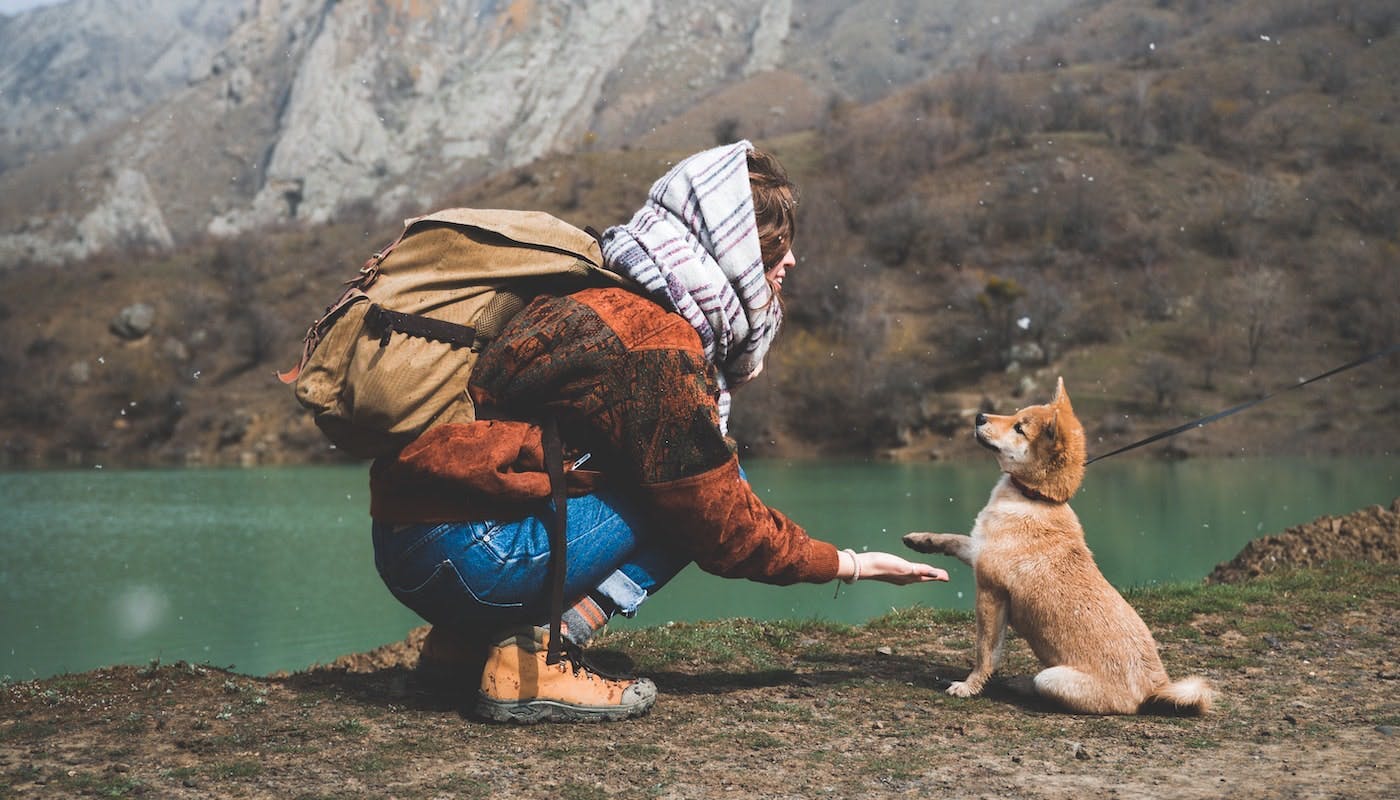How To Teach A Dog To Sit
Teaching your dog to sit isn’t just a polite behaviour that they need to learn as part of their socialisation. It’s also an important part of obedience training that will keep them safe when you’re out of the house. Having your dog trained to sit when you reach a crossroad, are waiting for something like in a queue, or are meeting people and they need to be patient, are all good examples of times when having a well behaved dog is an asset both to you, to those around you, and to your dog themselves.
Here are the main steps to follow when teaching your dog to sit, whether they’re a hyperactive puppy, an untrained rescue, or an older dog.
Training your dog to sit
Step 1: Reward-based sitting training
Stand in front of your dog with a treat in hand. Let them sniff the treat, then raise your hand slightly over and above them. This encourages them to look up and back which makes them sit. As soon as they’re in the sitting position, reward them with the treat.
Step 2: Repeat
Keep practising this motion, and add in the cue “sit” so they connect the sound of the word with this motion. Only treat them when they are fully seated, and give an ‘okay’ cue to let them know the training has ended.
Step 3: Switch sides
Try repeating the same steps, but instead of raising your hand with the treat, raise an empty hand for them to follow then reward them with a treat from the opposite hand.
Step 4: Ditch the treat
Once your dog consistently responds to the reward-based sit training, it’s time to remove the treat. Now your dog needs to be able to sit with just hand and voice signals. Say sit while raising your palm. Your dog should recognise these signals from the treat training. If they’ve not quite got the hang of it, practise a little more.
Step 5: Voice cues
When your dog has mastered the hand signal training, try ordering them to sit with voice cues alone. Tell them to sit, and wait three seconds. If they don’t sit, raise your hand and then reward them if they sit. Repeat this, lengthening the time between the voice and hand signals.
Step 6: Phasing out rewards
To get your dog used to sitting without reward, phase out treats and only offer them when they sit especially quickly. Always reward your dog with praise for sitting when instructed, but reducing their treats should lead to them sitting quickly.
Step 7: Vary the reinforcement
When your dog reliably sits when told, they don’t need to be rewarded. Reserve treats only for environments when they might be distracted and therefore less likely to sit on demand. Frequent rewards in these settings will reinforce the training. It’s important that they know to respond to these cues in all environments, not just at home.
What not to do
Don’t push your dog’s back or bottom down to get them to sit. Not only is pushing them, or pulling their leash up, to get them to sit ineffective, it can also be disturbing and confusing for your pet. Just keep at the same training method until they have nailed it. It might not be a speedy process, but with patience they will get there in the end.
It’s also not useful to say ‘sit down’ rather than just ‘sit’ as ‘down’ is another training cue which could confuse your dog as to what you’re asking them to do.
What’s next?
Now your dog knows how to sit, their behaviour both at home and in public is more likely to remain under your control. It’s a great place to start with any kind of obedience training, as once your dog can sit you can move on to teaching them to lie down, wait at roads and busy areas, not jump up at people, and even to roll over.
To help with your sit training, why not use Front of the Pack’s specially formulated freeze-dried dog treats/treats? They come in Farm Raised Rabbit, Free Range Beef Tripe, and Wild Alaskan Salmon flavours and are made from pure, raw protein with no added fillers, flavouring or rendered by-products. Can’t decide which flavour your pet will like best? Test out a variety pack of all three.
